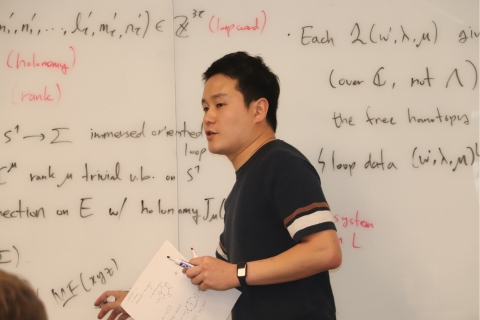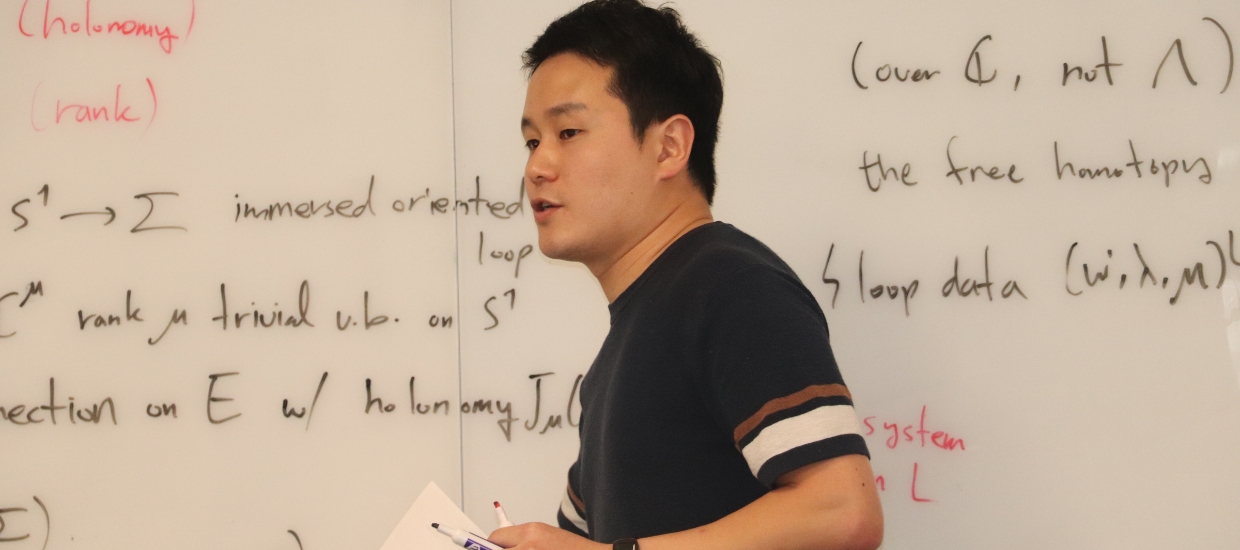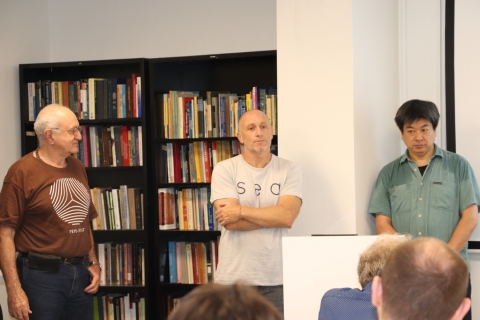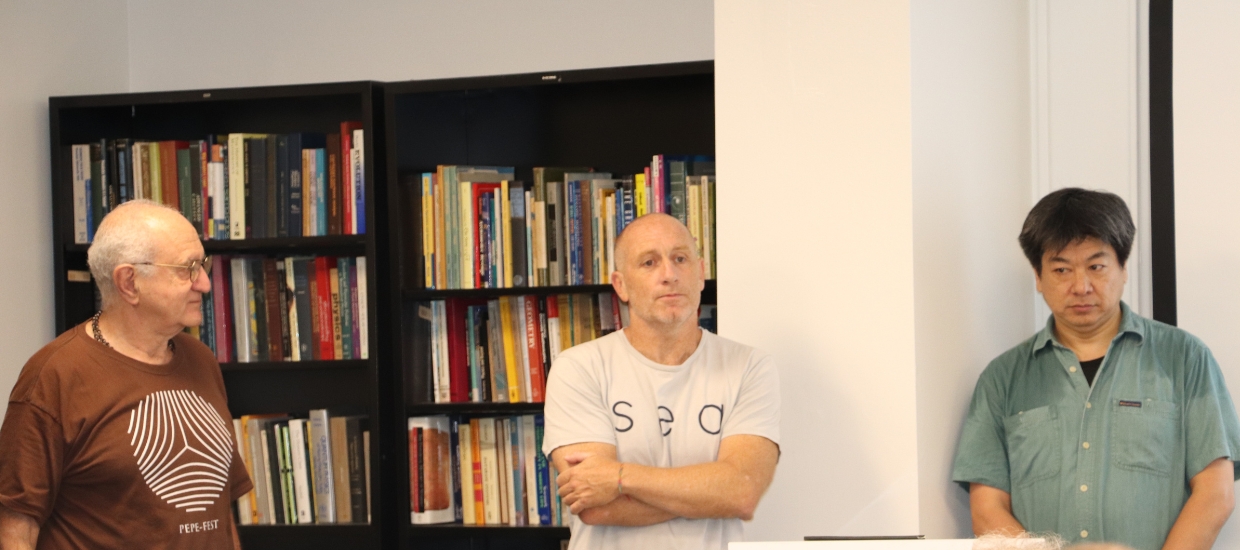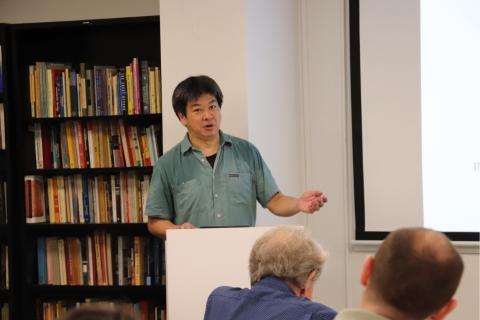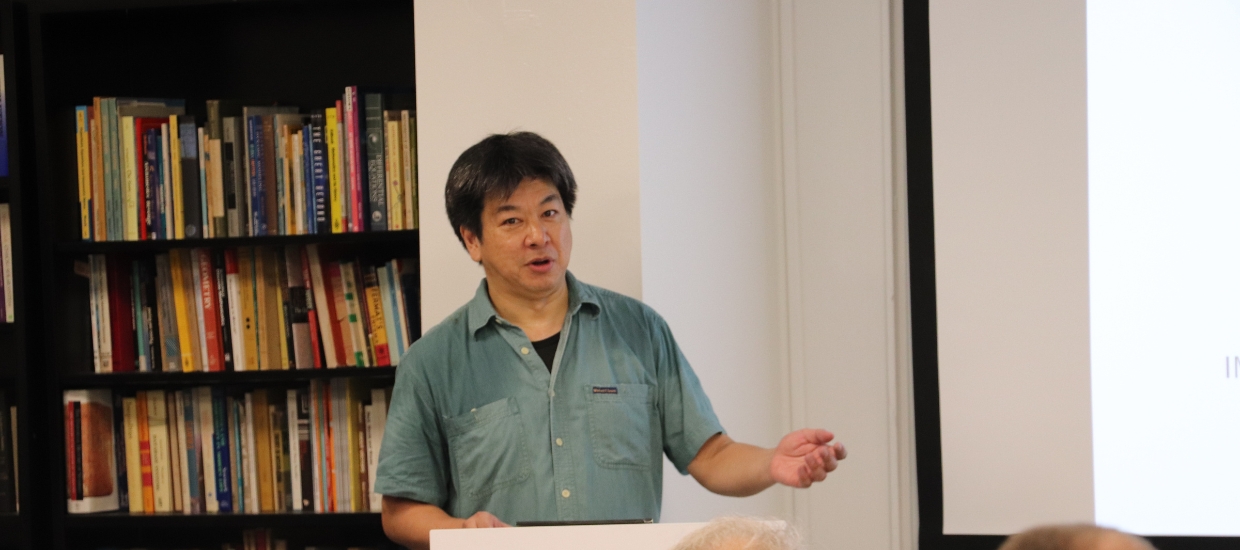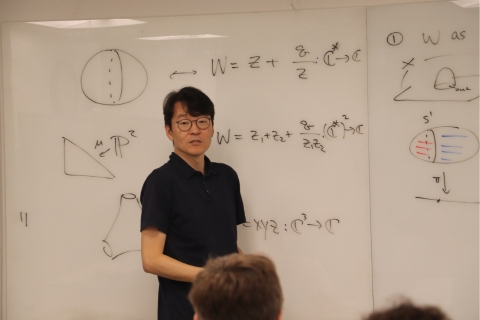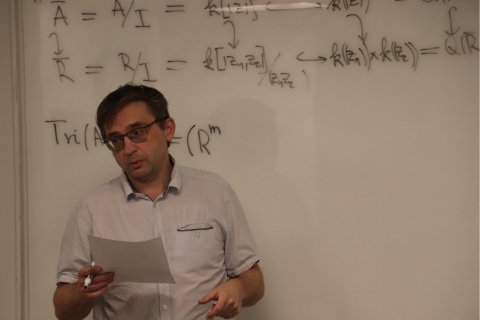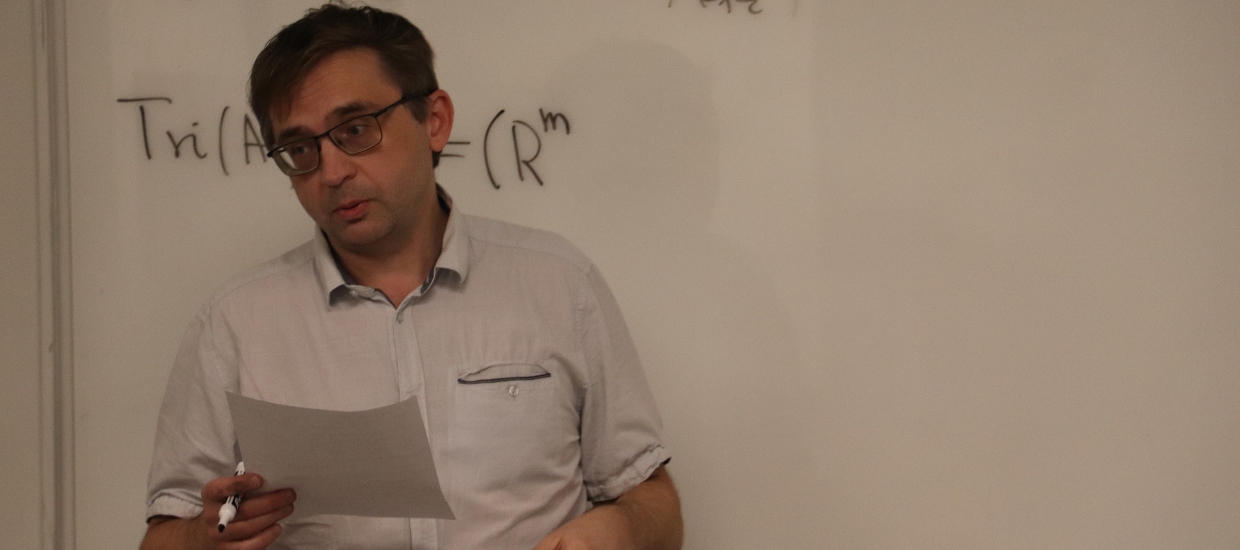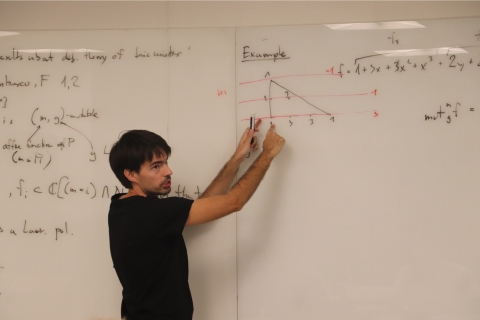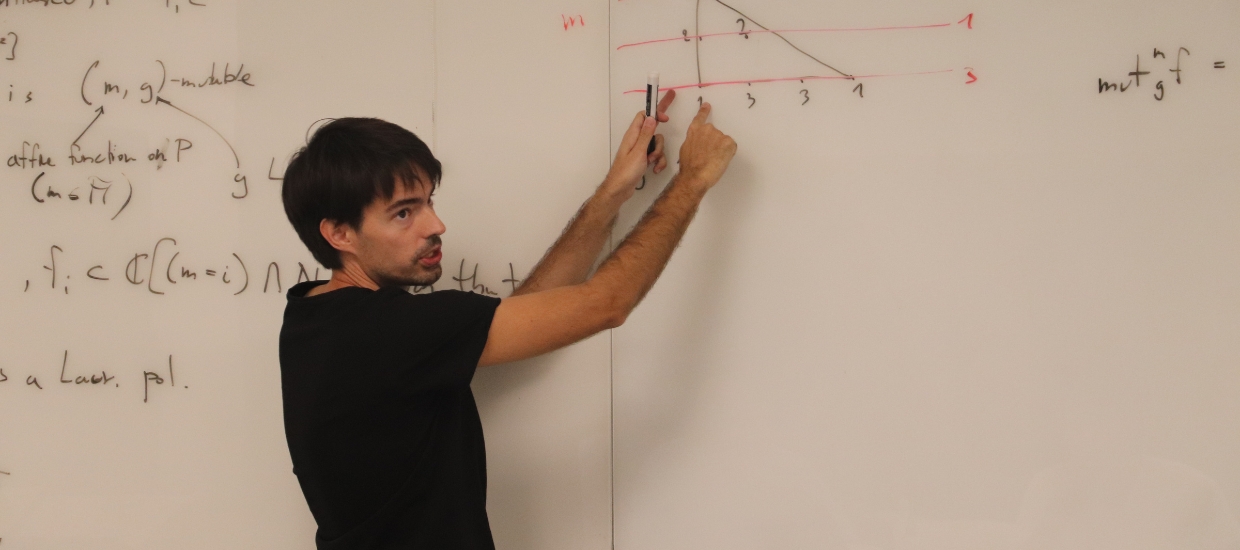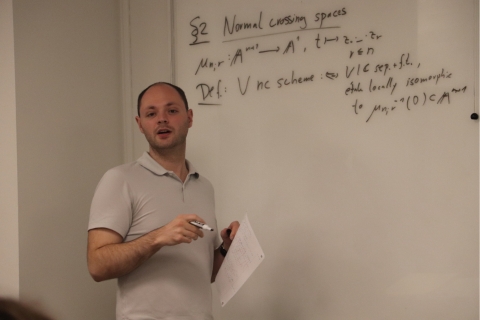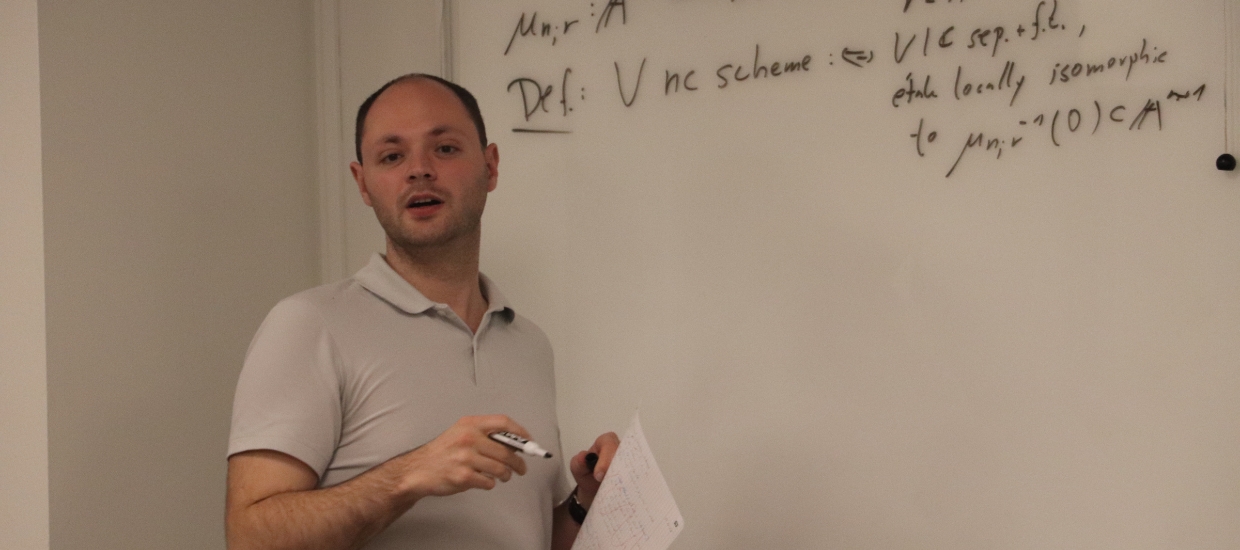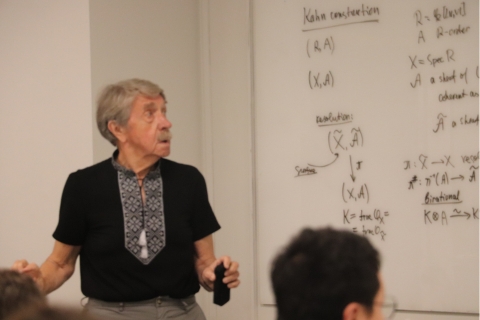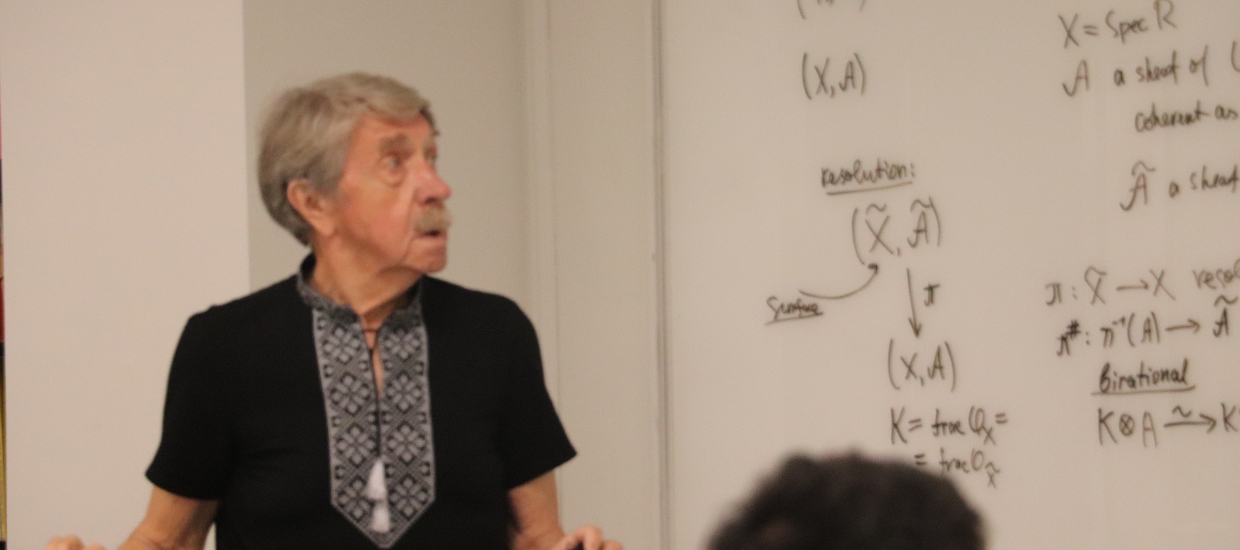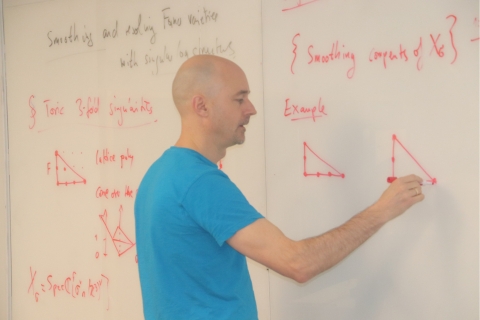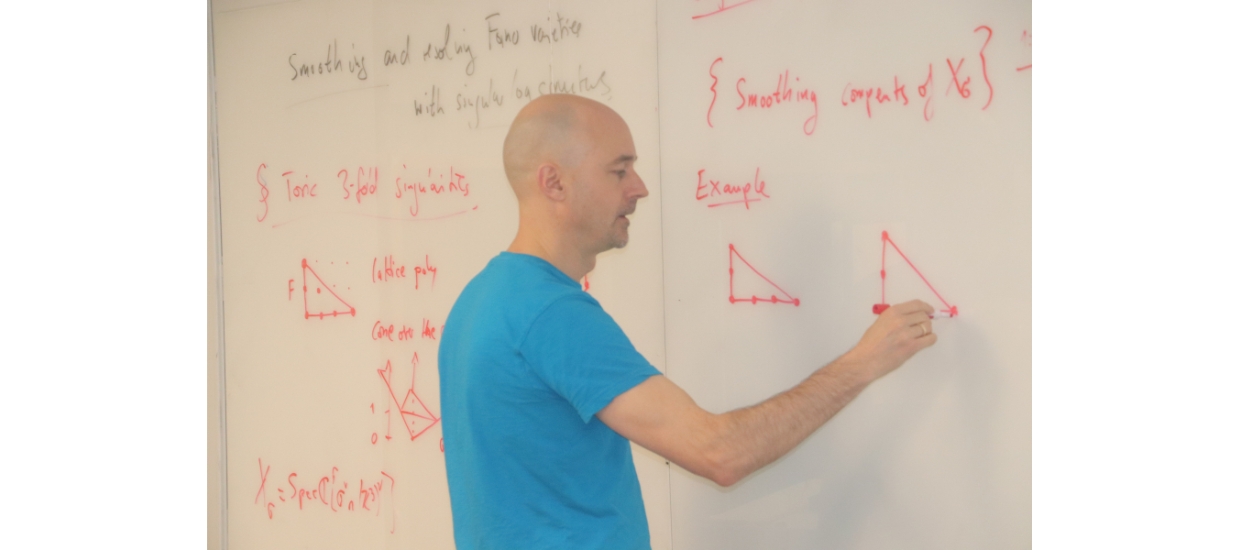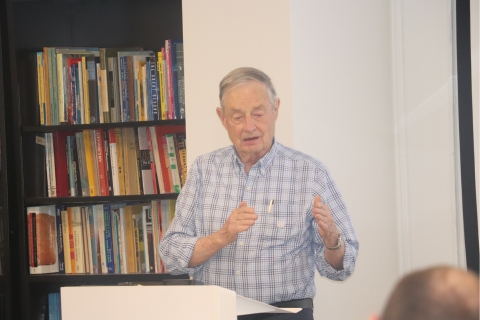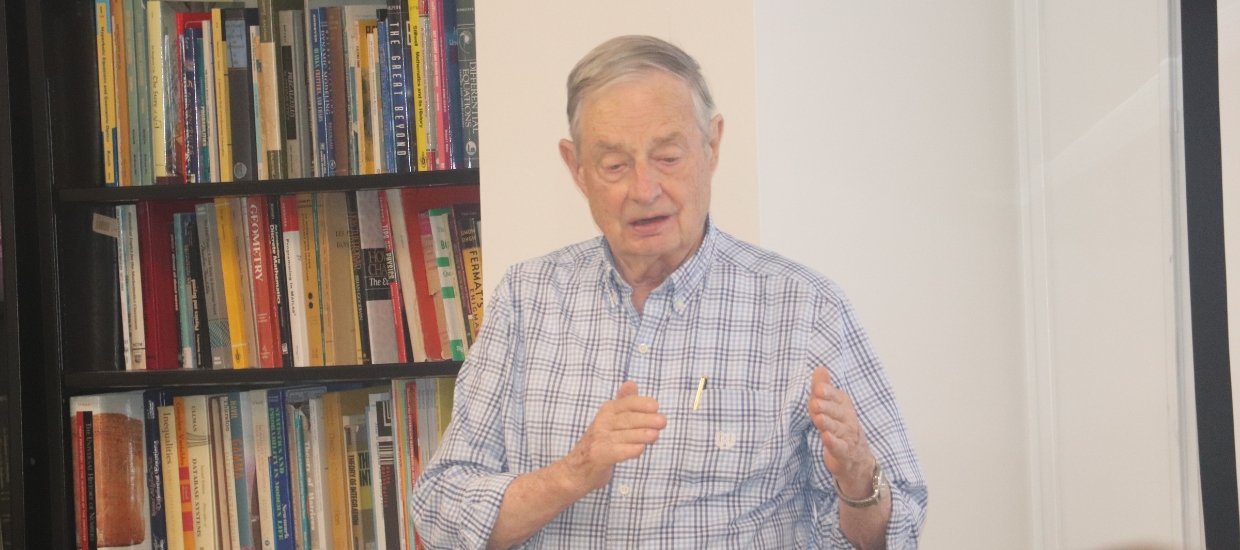Dates: November 11-15, 2024
Location: Ungar Building, Room 528B, University of Miami
Live Video Available via Zoom
Organized by: Javier Fernández de Bobadilla
To register, please click here.
Schedule
Monday, November 11, 2024
| 9:00am |
Atsushi Takahashi, Osaka University: Introductory lectures on singularities and mirror symmetry I Video
1. General Idea of Mirror Symmetry for Sigularities,
2. Invertible Polynomials and Topological Mirror Symmetry
3. Matrix Factorizations and Homological Mirror Symmetry
4. Possible Applications: Exponents vs. Vanishing Cycles.
|
| 10:00am |
Cheol Hyun Cho, Seoul National University: Introductory lectures on singularities and mirror symmetry II Video
1. Disk potential as a singularity.
2. Jacobian ring and Quantum cohomology.
3. Matrix factorization and Lagrangian Floer complex.
4. Symmetries in mirror symmetry.
|
| 11:30am |
Agustin Romano, Institute of Mathematics, UNAM & Andras Némethi, Alfréd Rényi Institute of Mathematics: Cohen Macaulay Modules and matrix factorizations on surface singularities 1 Video
In these talks, we will discuss results regarding the classification of maximal Cohen-Macaulay modules over normal surface singularities. We will focus on three cases: known results and techniques for general surface singularities, the classification of rank-one modules over rational and minimally elliptic singularities, and the construction of matrix factorizations for weighted homogeneous singularities.
|
| 3:00pm |
Igor Burban, Universität Paderborn & Yuriy Drozd, Institute of Mathematics of the National Academy of Sciences of Ukraine Video
|
| 4:00pm |
Discussion
|
Tuesday, November 12, 2024
| 9:00am |
Filip Matej, University of Ljubljana: Smoothing Gorenstein toric singularities and mirror symmetry Video
We establish a correspondence between one-parameter deformations of an affine Gorenstein toric variety, defined by a polytope P, and mutations of a Laurent polynomial f, whose Newton polytope is equal to P. If the Newton polytope P of f is two dimensional and there exists a set of mutations of f that mutate P to a smooth polygon, then, under certain assumptions, we show that the Gorenstein toric variety, defined by P, admits a smoothing. This smoothing is obtained by proving that the corresponding one-parameter deformation families are unobstructed and that the general fiber of this deformation family is smooth. Our assumptions hold for all polygons that are affine equivalent to a facet of a reflexive three-dimensional polytope Q, and thus we are able to provide applications to mirror symmetry and deformation theory of the Fano toric variety corresponding to Q.
|
| 10:00am |
Simon Felten, Columbia University: Global logarithmic deformation theory 1 Video
In this series of two lectures, we explain how a curved dg Lie algebra controls infinitesimal deformations of logarithmic varieties, why these deformations are unobstructed for logarithmic Calabi-Yau varieties, and how this unobstructedness allows us to construct smoothings of not necessarily d-semistable normal crossing spaces.
|
| 11:30am |
Igor Burban, Universität Paderborn & Yuriy Drozd, Institute of Mathematics of the National Academy of Sciences of Ukraine Video
|
| 3:00pm |
Atsushi Takahashi, Osaka University Video
|
| 4:00pm |
Rodolfo Aguilar, University of Miami: An introduction to variations of Hodge structures Video
We will define the basic notions of variations of Hodge structures. This is intended as a preparation for the next talks in this lecture series.
|
Wednesday, November 13, 2024
| 9:00am |
Simon Felten, Columbia University: Global logarithmic deformation theory 2 Video
In this series of two lectures, we explain how a curved dg Lie algebra controls infinitesimal deformations of logarithmic varieties, why these deformations are unobstructed for logarithmic Calabi-Yau varieties, and how this unobstructedness allows us to construct smoothings of not necessarily d-semistable normal crossing spaces.
|
| 10:00am |
Agustin Romano, Institute of Mathematics, UNAM & Andras Némethi, Alfréd Rényi Institute of Mathematics: Cohen Macaulay Modules and matrix factorizations on surface singularities 1 Video
|
| 11:30am |
Phillip Griffiths, Member of the National Academy of Sciences: Positivity in Hodge theory and algebraic geometry 1 (click for more information) SLIDES Video
|
Thursday, November 14, 2024
| 9:00am |
Cheol Hyun Cho, Seoul National University: Transpose polynomial from Lagrangian Floer theory Video
Given an invertible singularity of two variables, we explain how to obtain its Berglund-Hubsch transpose polynomial via Lagrangian Floer theory. We will focus on a relation between hypersurface restrictions in matrix factorizations or coherent sheaves and its symplectic geometric counterpart, which is one of the crucial steps in the construction.
|
| 10:00am |
Helge Ruddat, University of Stavanger: Smoothing and resolving toroidal crossing Fano varieties using log structures obtained from zero-mutable Laurent polynomials Video
In a series of joint works with Alessio Corti, we construct generically log smooth Fano varieties from reflexive polytopes. The log structures are obtained locally from a zero mutable Laurent polynomial and we conjecture that all log structures of this type are smoothable. A related conjecture for toric singularities was recently stated by Corti-Filip-Petracci. We also conjecture the existence and uniqueness of log resolutions alongside some interesting new mutation structure of the resolutions. A proof of the conjecture for admissible log singularities, as well as for the singularities known as Tom and Jerry, is current joint work with Tim Gräfnitz. The prospective outcome of this program is a unified construction of compact Fano manifolds, possibly in all dimensions but certainly for Fano 3-folds. The method is also believed to work for Q-Gorenstein Fano varieties.
|
| 11:30am |
Nero Budur, KU Leuven: The Local Structure of the Generic Theta Divisor Video
A principle governing deformation theory with cohomology constraints in characteristic zero, generalizing Deligne's well known deformation theory principle, was developed together with B. Wang in terms of differential graded Lie modules, and with M. Rubio in terms of L-infinity modules. This principle has been illustrated many situations with complicated moduli spaces, but surprisingly, it has also recently led to a result about one of the oldest topics in algebraic geometry: for a generic compact Riemann surface the theta function is at every point on the Jacobian equal to its first Taylor term, up to a holomorphic change of local coordinates and multiplication by a local holomorphic unit.
|
| 3:00pm |
Phillip Griffiths, Member of the National Academy of Sciences: Positivity in Hodge theory and algebraic geometry 2 (click for more information) SLIDES Video
|
| 4:00pm |
Discussion
|
Friday, November 15, 2024
| 9:00am |
Ludmil Katzarkov, University of Miami: Theory of atoms, singularity theory and applications to birational geometry I
In these talks we will introduce new birational and G birational obstructions to rationality - the theory of atoms, Mendeleev tables, spectra. Video
|
| 10:00am |
Ludmil Katzarkov, University of Miami: Theory of atoms, singularity theory and applications to birational geometry II
In these talks we will introduce new birational and G birational obstructions to rationality - the theory of atoms, Mendeleev tables, spectra. Video
|
| 11:30am |
Kyungmin Rho, Universität Paderborn: Matrix factorizations from Fukaya categories of surfaces
Burban-Drozd (2017) classified all indecomposable objects in the category of maximal Cohen-Macaulay (MCM) modules over the non-isolated surface singularity xyz=0, and hence, in the category of matrix factorizations of xyz. Under homological mirror symmetry (HMS), these categories are also equivalent to the Fukaya category of the pair-of-pants surface, as proven by Abouzaid-Auroux-Efimov-Katzarkov-Orlov (2013), and the equivalence is explicitly realized by Cho-Hong-Lau's localized mirror functor (2017). In this talk, we find the objects in the Fukaya category that correspond to the indecomposable MCM modules in Burban-Drozd's classification. They are given by immersed curves in the surface equipped with local systems. Using this geometric description, we derive an explicit canonical form of matrix factorizations of xyz, and present applications to algebraic operations through geometric approaches. This is based on joint works Cho-Jeong-Kim-Rho (2022) and Cho-Rho (2024). Video
|
| 3:00pm |
Rodolfo Aguilar, University of Miami: Infinitesimal methods in mixed Hodge theory
After recalling, giving examples and applications of infinitesimal variations of Hodge structures, we will define its mixed counterpart. Then we associate to it two invariants and describe them more explicitly in the case of pairs (X,Y) where X is a Fano 3-fold and Y an anticanonical surface. We will conclude with a Torelli type theorem for general pairs (X,Y) where X is a cubic threefold and Y as before. Joint work with M. Green and P. Griffiths. Video
|
| 4:00pm |
Discussion
|
Participants
| Javier Fernández de Bobadilla |
Basque Foundation for Science |
Nero Budur
|
KU Leuven |
Igor Burban
|
Universität Paderborn |
Cheol Hyun Cho
|
Seoul National University |
|
Eleonore Faber*
|
Universität Graz |
Simon Felten
|
Columbia University
|
Agustin Romano
|
UNAM |
Helge Ruddat
|
University of Stavanger |
José Seade
|
UNAM |
Atsushi Takahashi |
Osaka University |
| Andras Némethi |
Alfréd Rényi Institute of Mathematics |
Duco van Straten |
Johannes Gutenberg University of Mainz |
| Yuriy Drozd |
Institute of Mathematics of the National Academy of Sciences of Ukraine |
Kyungmin Rho |
Universität Paderborn |



